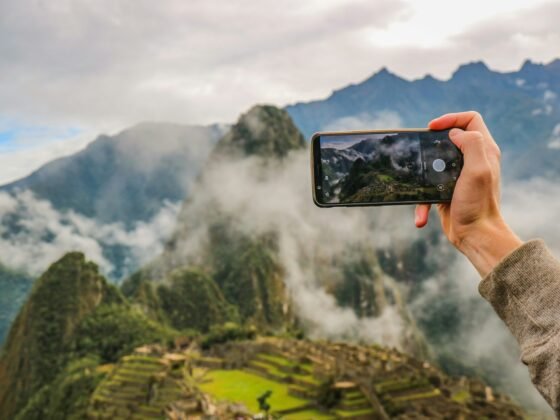Embarking on a journey to the Far East is not just about booking flights and accommodations; it involves immersing yourself in a world rich with history, culture, and breathtaking natural landscapes. Whether you’re navigating through the bustling markets of Bangkok, exploring the serene gardens of Kyoto, or trekking through the vast landscapes of rural China, careful planning can significantly enhance your travel experience. This article offers detailed guidance to help you prepare for an unforgettable adventure across this diverse and culturally rich region.
Understanding the Cultural Tapestry of the Far East
The Far East is a term that encompasses a wide array of countries each with its unique culture, traditions, and historical landmarks. This region includes major countries like China, Japan, South Korea, and parts of Southeast Asia including Vietnam, Thailand, and Malaysia, among others. Understanding the diversity of each destination within the Far East is crucial to appreciating what each has to offer and ensures you respect local customs and traditions during your visit.
Travel Documentation and Health Preparations
Visa Requirements
Visa requirements can vary significantly from one country to another within the Far East. For instance:
- Japan and South Korea generally offer visa-free entry or visa-on-arrival options to many nationalities for short stays.
- China requires most travelers to secure a visa before arrival, involving an application process that may take weeks.
- Vietnam and Cambodia provide an e-visa service, which is a convenient option for travelers.
Health and Safety
Before traveling, it’s crucial to consult with a healthcare provider to discuss necessary vaccinations and health precautions. Commonly recommended vaccinations for travel in the Far East include Hepatitis A and B, Typhoid, and Japanese Encephalitis, especially if you plan to visit rural areas.
Crafting Your Itinerary
Creating a thoughtful itinerary is key to a fulfilling trip. Consider the following:
- Travel Duration: Define how much time you want to spend in each location. Quality often trumps quantity, so consider exploring fewer places in greater depth.
- Travel Priorities: What experiences are you seeking? Are you drawn to cultural sites, natural beauty, urban life, or culinary experiences? Align your itinerary with your interests.
- Weather and Timing: Research the best times to visit based on weather conditions and local holidays, which can significantly impact your travel experience.
Packing Essentials for the Far East
Packing effectively for the Far East involves preparing for varied climates and respecting local cultures. Essentials include:
- Appropriate Clothing: Lightweight, breathable fabrics are ideal for humid climates, while more conservative outfits may be required for temple visits in certain countries. Military backpacks are a great option for getting everything in one bag.
- Travel Adapters and Electronics: Different countries may have different plug types and voltage requirements, so a universal travel adapter is essential.
- Personal Medications and Health Supplies: Ensure you have enough prescription medicine for your entire trip, along with a travel health kit for minor ailments.
Cultural Etiquette and Engagement
Engaging respectfully with local cultures enhances your travel experience and fosters positive interactions. Simple gestures like learning basic phrases in the local language, understanding dining etiquette, and being aware of dress codes for sacred sites can go a long way in showing respect for the local culture and people.
Maximizing Your Travel Experience
To truly embrace the Far East, remain open to spontaneous discoveries and local experiences. Participate in local festivals if possible, explore off-the-beaten-path locations, and engage with locals to enrich your understanding of the region. Moreover, document your journey through photos and notes—it’s not only a wonderful way to preserve memories but also helps share your experiences with others.
Mastering the local transportation systems is an essential part of your travel adventure in the Far East. Each country in the region offers a variety of public and private transportation options, which can vary widely in terms of convenience, cost, and accessibility. Understanding these options will help you move seamlessly across cities and countryside, enhancing your travel experience while minimizing stress.
Public Transit Systems
- Efficient Metro and Rail Networks: Countries like Japan and South Korea are renowned for their highly efficient and punctual rail services. The Shinkansen (bullet train) in Japan and the KTX (Korea Train Express) in South Korea offer fast and reliable connections between major cities.
- Extensive Bus Services: In regions where trains are less accessible, buses provide a comprehensive network. China’s bus system, for example, reaches areas that other public transport does not cover, offering an affordable way to travel long distances.
Taxis and Ridesharing
- Taxis: Available widely throughout the Far East, taxis can be a convenient option for direct routes or when public transportation is not operating. In many cities, taxis are metered, but it’s always a good idea to confirm the fare before starting your journey.
- Ridesharing Apps: In urban areas, services like Grab, DiDi, and Uber offer convenient ridesharing options. These apps not only provide a safe and easy way to navigate cities but also help overcome language barriers with features that translate your destination directly for the driver.
Alternative Transportation
- Bicycles and Scooters: For shorter distances or when exploring rural areas, renting a bicycle or an electric scooter can be an enjoyable and flexible way to see the sights. Many tourist-friendly cities offer rental services with convenient pick-up and drop-off points.
- Domestic Flights: For covering large distances quickly, domestic flights within countries like China and Indonesia can save time and are often reasonably priced.
Tips for Smooth Transit
- Travel Cards: In countries with advanced public transportation systems, using a rechargeable travel card like Japan’s Suica or South Korea’s T-Money card can make transit more convenient and sometimes cheaper.
- Local Guidance: Don’t hesitate to ask for help. Hotel staff, local friends, or tourist information centers can offer valuable insights and tips for navigating the local transportation landscape effectively.
- Staying Safe: Travelling through China and the rest of the Far East, free wifi is often available at airports and train stations. To protect yourself online, always use a VPN for China when logging on to public wifi networks.
By familiarizing yourself with these transportation options, you can plan your daily itineraries more efficiently and ensure that you spend less time in transit and more time enjoying the rich cultures and beautiful landscapes of the Far East.
Conclusion
Planning a trip to the Far East is as much about preparing for the journey as it is about embracing the unexpected. With careful preparation, you can ensure your visit is enriching and seamless. The Far East offers a profound blend of the ancient and the modern, and with the right approach, your travels can provide lasting memories and a deeper appreciation for this vibrant part of the world.
Photo by Robin Noguier on Unsplash












